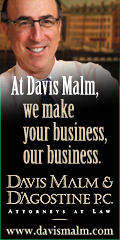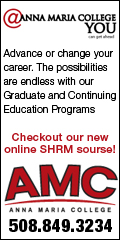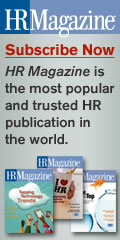NEHRA News
Northeast Human Resources Association
There are several steps to creating an effective recruitment program. The first starts with the basics - the job description. Many companies don't even have job descriptions for their positions and that's one of many hiring pitfalls. It’s very difficult to describe a position to a candidate, without having it completely defined. The next problem with job descriptions is that they are usually not definitive enough. It's important to detail the expected job performance outcome, and be very specific in what is needed and expected. The job description should have 30-, 60-, 90- and 180-day objectives, so the candidate has a clear understanding what is expected for the job. Be sure to review and update job descriptions regularly, as company needs and expectations for a position are bound to change.
The next step is to define where to recruit candidates or target your recruiting process. Now that you have an idea of what you need and expect for the position, where do you find this treasured person? There are many resources: Referrals, recruiters, ads, college placement centers, .com listings, etc. Of course, referrals are usually one of the best sources for candidates and giving out the job description to business associates and friends may reveal the perfect candidate. When working with recruiters, it is very important to be as specific as possible to avoid your time being wasted with unqualified candidates.
According to Arnie Winkler of the Northwest Public Power Association, "Organizations must be specific in understanding what they want in technical competency, cultural fit and behavioral characteristics." The same is true for ads so that the ad is as definitive as possible. College placement centers are not only good for recruiting college grads, but usually have facilities to list positions that require extensive experience too. They can be especially helpful if they are in close contact with the alumni association.
Soon in your hiring process, you will be faced with a big pile of resumes. Look for resumes that are specific to your needs and notice the presentation style, which will tell you a great deal about the candidate. It is helpful to decide what the priorities are for the position and look for those first in the resumes. Once you have settled on a few resumes, we suggest the two step approach to interviewing. The first is the telephone interview, which can save you valuable time and effort. Ask the candidate a set of specific questions, such as: Why are you interested in this position? Please describe three key attributes that you have to offer to our company? Give me one significant program that you had an impact on in the last six months? Listen carefully to the candidate to see if the response fits the job description. This process allows the candidate to earn a face-to-face interview.
When interviewing in person, it is important to listen and not let emotions take over. The candidate should talk about 80 percent of the interview and the interviewer only 20 percent. The goal for interviewing effectively is to note their thinking patterns, and not get caught up in appearances, impressive schools or companies. During the interview, questions that are more specific are helpful in making successful hiring decisions. Some examples are: What significant impact have they had at three or more companies on their resumes - ask for specifics, percentage of change; Please describe in detail what brought about the change; What was their process, from A to Z? and ask how the candidate would handle a specific problem that you have seen in the position.
Once a candidate has been selected to be hired, then the most difficult part of the hiring process begins - reference checking. Most firms find professional organizations helpful when making background checks. We highly recommend doing a very thorough check including verifying education, job history, criminal (local, state and federal) and credit if it applies. Background and reference checks should be a part of your hiring process.
Yet, as the old saying goes, "You never know someone until you work with them, travel with them or live with them". Through in-depth work style and personality assessments, you can reduce the possibility of making a hiring error if the appropriate assessment is selected.
-
Training or degrees of those who are providing the debrief/interpretation of the data.
-
A copy of the resume and job description should be supplied to the testing company.
Number of actual scales (minimum of 12)
Scale for "Impression Management"
What is the history of the profile?
Does the profile meet U.S. government employment standards? Has it been reviewed for ADA compliance & gender, culture and racial bias?
Does the data provide an understanding on how an individual is wired?
These are some general questions and if a profile falls short in any one area, we strongly suggest additional research into the accuracy of the data being generated.
A common inquiry from companies and organizations is about the legal guidelines in providing assessments to candidates. Since industries vary, it is always best to check with a trade association or a legal representative. The general rule is that a test or any set of hiring questions needs to be administered to all final candidates in order to assure that discrimination is not taking place. More information may be found at the EEOC website, in the Disability-Related Inquiries and Medical Examinations of Employees section:
http://www.eeoc.gov/policy/docs/guidance-inquiries.html#2
Another question is how do new hires usually feel about taking an in-depth, work style assessments. It shows that a company is serious about who they hire. If the company presents the testing program as a method of assuring both parties that they are making the right decision, the individual usually responds very well. The bottom line is that hopefully turnover is greatly reduced.
In-depth assessments can be very helpful for personnel development and succession planning. As a hiring tool, they can be used to develop additional questions for interviewing and confirming the interviewer's intuition that might be overlooked. This process gains more reliable and accurate data in order to effectively manage individuals to make hiring and personnel decisions a win-win for everyone.
About the Author: Dana Borowka, MA has over 25 years of experience in business consulting. He has an undergraduate degree in Human Behavior and a masters degree in Clinical Psychology. He can be reached via phone at (310) 453-6556, extension 403 or via email at dana@lighthouseconsulting.com.
Let’s say, for example, you want to know whether a program your area is offering is meeting expectations.
Often a feedback form is provided that asks for participant feedback. This might include questions such as:
1. What did you find most positive from this program?
2. What changes could make this program even better?
This is a fine start to gaining qualitative data. However, it is often wise to ask both quantitative and qualitative data. For quantitative data, a simple five-point Likert scale is often a good option. It is easy to develop and to fill out. It is generally considered reliable, and all the elements or scores have the same value which aids interpretation.
So, we often see questions on feedback forms today that include this scale by posing a statement and then asking you to choose either:
1. Strongly disagree
2. Disagree
3. Neither agree nor disagree
4. Agree
5. Strongly agree
What is often overlooked when evaluating a program or training is the use of pre and post measures. This is easily remedied. By using even one pre measure, much information is gained. For example,* let’s look at the following question:
"To what extent was this program useful from your perspective?"*
1 2 3 4 5
Low (Not Useful) Med High (Very useful)
*Note: please feel free to change the term "useful" in the following scale to one that works better for your efforts (e.g., successful, productive, etc).
Let’s say all 20 participants return their feedback forms, and the average rating is 4.0. You share this rating with your manager who asks you why the rating is so low.
You are surprised and say that you think a rating of 4 out of 5 is quite high. Your manager doesn’t agree, and feels that a 4.0 is not an adequate rating.
What do you do?
In fact, with the information you have, you actually cannot be sure what this 4.0 measure means. One option that may enable your argument that 4.0 is a good rating would be to add a pre-measure.
So, let’s say, instead, you provide the following two Likert scales (be sure to hand out the feedback form with this question before the start of the program):
A1. What are your expectations of this program’s usefulness as you begin the program?:
1 2 3 4 5
Low Med. High
A2. Why did you rate it this way?
Ask this to be completed at the end of the program:
B1. "Now, on leaving, to what extent was this program useful from your perspective?"
1 2 3 4 5
Low Med. High
B2. Why did you rate it this way?
Let’s say you again receive all 20 responses, and again the average rating on leaving was 4.0 with a range of 4.0-5.0. However, you now have an additional data set: the average rating at the start was 2.0 with a range of 1.0-3.0!
You would now accurately be able to say, "On average, the program met and exceeded participant expectations." You could also accurately confirm that given expectations, a rating of 4.0 on leaving was an increase from 2.0-4.0! Of course, your manager could ask why expectations were so low, but given you have asked the qualitative, "Why," you would have some data – some specific written comments -- to explain this, too. So, not only is 4.0 a significant increase from participant expectations, you can also report why it was so rated.
Consider using pre and post measures for other topics as well. If you are working to support a team in their development, for example, you can ask a series of pre-ratings, asking about their ability to collaborate, communicate, etc. Using mid-program measures for longer efforts can provide even greater clarity. By using pre, mid, and post measures, the data you gather can provide greater breadth and content to your evaluations.
Additional tips for developing survey or feedback questions:
1. Ask only one question per question. For example, "To what extent was this program useful and practical?" is actually two questions ("To what extent did you find this program useful?" AND "To what extent did you find this program practical?") Choose only one per question.
2. Follow your quantitative questions with the opportunity to write qualitative responses. (As noted above, you could ask "Why" after a quantitative question.
3. Keep it short.
4. Ask about the participant, so long as it does not relinquish anonymity when this is desirable. For example, "# of years you have worked at the company." This could provide further means for interpreting the data you receive.
5. Consider different uses of the data so that the questions you ask will provide the information you need.
6. Be inventive! Try some new questions to discover what will most engage and interest colleagues.
About the Author:
Jeannette Gerzon, EdD, SPHR., Organization Development Consultant in Human Resources at MIT can be reached at gerzon@mit.edu.
This non-medical, home care organization connects senior caregivers with seniors in need and provides companionship, transportation, meal preparation, overnight stays, and home maintenance services - all by seniors who want to supplement their income while having a dignified and fulfilling service opportunity.
Doug and his wife Deborah are life-long residents of the area and the business will serve the towns of Ashland, Holliston, Marlborough, Maynard, Sherborn, Southborough, Stow, Sudbury, Wayland and Westborough.
Congratulations Doug!
- To become a fan of NEHRA on Facebook, CLICK HERE.
- If you are already a member of LinkedIn, CLICK HERE to join the NEHRA LinkedIn Community!
If you are not already a member of LinkedIn, you will need to follow the easy steps to create your profile. Once your profile is completed you can follow the steps below to become a member of the Northeast Human Resources Group.
- Find the tab for "Groups" on your home page and select "Group Directory."
- Use the search function in the upper right and type in "Northeast Human Resources Association."
- Click on "Join this Group."
- This will bring you to a description of the group and you will be asked to make selections about your preferences for display the group logo on your personal page.
- Enter a contact email address, a digest e-mail address, delivery frequency, announcements and messages.
- Once you have made these choices click the button "Join Group."
- Your message will come to the NEHRA Group Administrator to verify membership and approve you for the group.
To Join a Community Forum Subgroup on LinkedIn
- Once you are a member of the Northeast Human Resources Group, select "Subgroups."
- Select all the groups you are interested in joining.
- Your request goes to the NEHRA Group Administrator for approval.
- You will receive a message that you are a member of this subgroup and you can begin to read and post information on the Subgroup page.
Current NEHRA Subgroups
- Learning and Development Community Forum
- Diversity and Inclusion Community Forum
- Consultants Community Forum
- Small Business HR Community Forum
- HR Technology Community Forum
- Talent Acquisition Community Forum
- Flexible Workplaces Community Forum
It will also ensure that your information is correct in the Member Directory. Once you log in, go to the "About NEHRA" tab and select Membership Directory and then click on Update my Membership Profile.
While you are updating your profile, you might want to consider joining one of the Community Forums or adding your name to one of the Listservs. An updated profile and connecting to one of the NEHRA Communities is a great way to maximize your membership and create your personal network.
If you need help with this process please do not hesitate to contact Carole Edson, Director of Membership, at cedson@nehra.com.
For more information or to sign up for this opportunity, contact the NEHRA office today at (781) 235-2900 or via email at info@nehra.com.
The companies or Employment Partners benefit by outsourcing a full-time, entry-level, professional job to one team of four students who share the job. The NDHS student workers are an innovative resource that enables organizations to increase their diversity and to make a real impact on the workforce of the future without adding to their roster of full-time employees. Many Employment Partners really value the energy that the student workers bring to their companies.
As NDHS continues to grow, the CWSP seeks additional Employment Partners for our students. To learn more about the CWSP and how it can benefit your company, please go to www.ndhslaw.org/corporate-work-study-program.
Designed to provide episodic care and treatment, but primarily focused on managing chronic, high-cost conditions, on-site clinics have the ability to improve employee health while creating claims cost savings over time that are sufficient to cover the entire annual operating cost.
The breakfast presentation will include case studies on Hay's specific clients and other employers that have achieved positive ROI and health improvements through an on-site clinic strategy.
SPEAKERS:
Eric Kasen
Executive VP
Hays Companies
Lester Morales
National VP
Healthstat
PLEASE RSVP by December 30th to Andrea Devoe via phone at (617) 778-5032 or via email at adevoe@hayscompanies.com.



